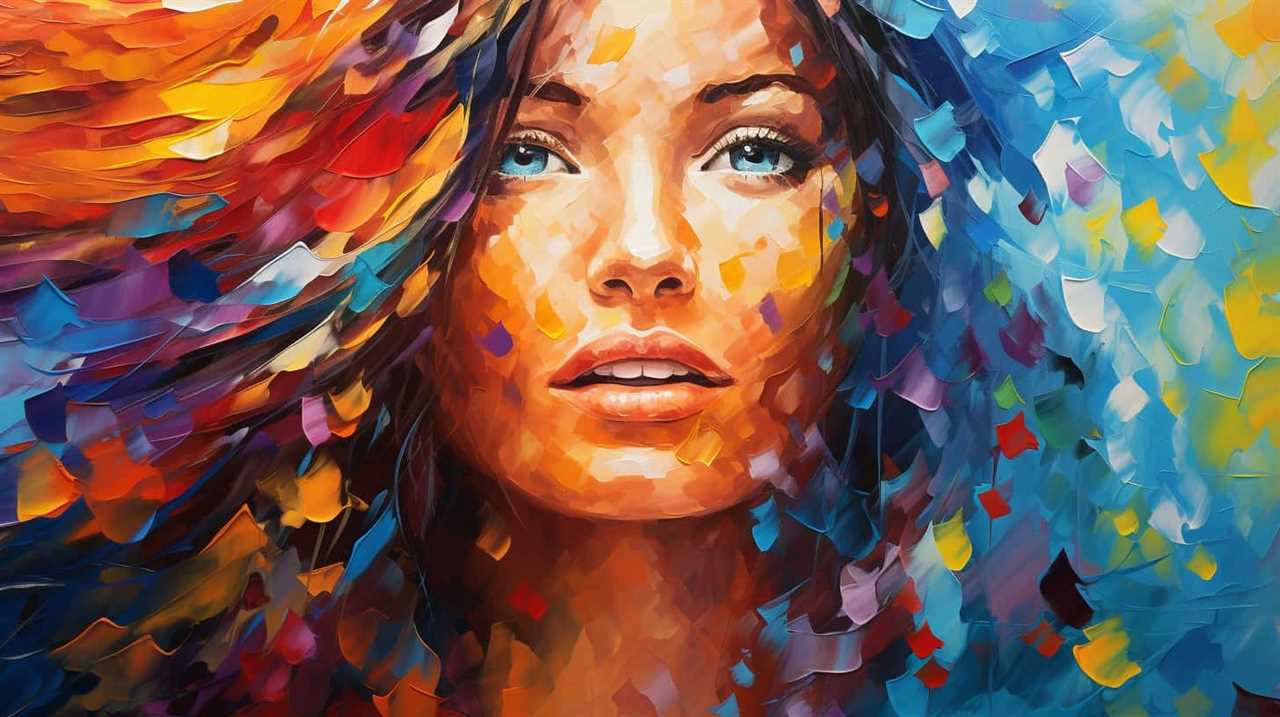Greetings, art lovers! This article explores the fascinating world of the digital revolution and its significant influence on artists.
From the mesmerizing digital illustrations of modern graphic designers to the innovative use of virtual reality in immersive installations, the digital age has sparked a vibrant transformation in artistic practices.
Through the lens of liberation, we explore the eight best insights that shed light on this dynamic shift. We uncover the new creative possibilities that technology has unlocked, the challenges and opportunities artists face in the digital era, and how the boundaries of art are being redefined through digital innovations.
Join us on this exhilarating journey as we navigate the impact of social media, digital tools, and collaborations on artists’ careers in our ever-connected world.

Key Takeaways
- Artists are embracing new technologies in their creative processes, which allows them to break free from physical limitations and redefine the boundaries of art.
- Virtual reality technology enables immersive and interactive art experiences, allowing viewers to explore and interact with art in new ways.
- The digital era provides new opportunities and revenue streams for artists through online platforms, while also raising concerns about copyright protection.
- Social media platforms have had a significant impact on artists’ careers by providing a global platform to showcase their work, engage with a larger audience, and gain exposure and opportunities.
Changing Artistic Practices in the Digital Age
In our digital age, artists are embracing new technologies and incorporating them into their creative processes, resulting in a significant transformation of artistic practices. The rise of digital art marketplaces has provided artists with new avenues to showcase and sell their work. These platforms enable artists to reach a global audience and connect with potential buyers in unprecedented ways. Artists can now easily upload and sell their digital artwork, breaking free from the limitations of physical galleries and traditional art market structures.
Moreover, virtual reality (VR) technology has opened up exciting possibilities for artists to create immersive and interactive art experiences. By using VR headsets, viewers can step into the virtual world and engage with art in ways that were previously unimaginable. Artists can now build entire virtual environments, where visitors can explore, interact, and even manipulate the artwork itself. This has revolutionized the way art is experienced, allowing for a more dynamic and participatory engagement.
The integration of digital art marketplaces and virtual reality art experiences has revolutionized artistic practices, offering artists new avenues for distribution and pushing the boundaries of creativity. With these technological advancements, artists are no longer bound by physical limitations and are free to explore new creative possibilities.
In the following sections, we’ll delve deeper into the ways artists are embracing technology to push the boundaries of their art even further.

Exploring New Creative Possibilities With Technology
Continuing our exploration of the impact of the digital revolution on artists, we now turn our attention to the exciting realm of ‘Exploring New Creative Possibilities With Technology’. As artists embrace the digital era, they are discovering innovative ways to create and engage with their audience through interactive installations and virtual reality experiences.
| Interactive Installations | Virtual Reality Experiences |
|---|---|
| Artists can create immersive environments that invite viewers to actively participate in the artwork. These installations blur the line between the artist and the audience, fostering a sense of collaboration and shared experience. | Virtual reality allows artists to transport viewers into entirely new worlds, enabling them to explore and interact with art in ways never before possible. Artists can create virtual exhibitions, where viewers can navigate through digital galleries and experience art from the comfort of their own homes. |
| By incorporating technology such as sensors, motion detectors, and touchscreens, artists can create interactive installations that respond to the viewers’ presence and actions. This interaction adds a new layer of engagement and interactivity to the artwork, making it a truly immersive experience. | Through virtual reality experiences, artists can break free from the physical limitations of traditional art forms. They can experiment with new mediums, perspectives, and dimensions, pushing the boundaries of their creativity and offering viewers a fresh and captivating artistic encounter. |
As artists delve into these new creative possibilities, they are not without challenges and opportunities in the digital era. [Transition to the next section: ‘challenges and opportunities for artists in the digital era’]
Challenges and Opportunities for Artists in the Digital Era
As we delve into the realm of challenges and opportunities for artists in the digital era, we find ourselves faced with a myriad of possibilities for growth and adaptation. The digital revolution has brought about significant changes in the way artists create and distribute their work, presenting both challenges and opportunities. Here are some key factors to consider:
- New revenue streams: The digital era has opened up new avenues for artists to generate income. With the rise of online platforms, artists can now sell their work directly to consumers, eliminating the need for intermediaries. Additionally, crowdfunding platforms provide artists with an opportunity to secure funding for their projects, allowing them to maintain creative control.
- Copyright protection: With the ease of digital reproduction, protecting intellectual property has become a major concern for artists. However, technological advancements have also provided solutions. Artists can now utilize blockchain technology to establish proof of ownership and protect their work from unauthorized use or reproduction.
- Global reach: The digital era has made it easier for artists to reach a global audience. Through social media and online platforms, artists can showcase their work to people around the world, expanding their fan base and opportunities for collaboration.
- Collaborative opportunities: Digital platforms have facilitated collaboration among artists from different disciplines and geographical locations. Artists can now connect with like-minded individuals and work together on projects, bridging the gap between different art forms and creating innovative works.
- Democratization of art: The digital era has democratized the art world, allowing artists from diverse backgrounds to showcase their work and gain recognition. Online platforms have eliminated the traditional gatekeepers, giving artists the freedom to express themselves and find an audience without the need for institutional approval.
As we explore the challenges and opportunities for artists in the digital era, it becomes clear that the digital revolution has had a profound impact on artistic expression.

The Digital Revolution’s Influence on Artistic Expression
How does the digital revolution shape the way we express ourselves artistically?
The digital revolution has had a profound impact on the changing artistic landscape and the evolving creative expression of artists worldwide. With the advent of digital tools and platforms, artists now have more opportunities than ever to experiment, collaborate, and share their work with a global audience.
Digital technology has opened up new possibilities for artistic expression, allowing artists to explore new mediums, techniques, and styles. From digital painting and photography to interactive installations and virtual reality experiences, artists are pushing the boundaries of traditional art forms and creating innovative works that engage and captivate viewers in new and exciting ways.
The digital revolution has also democratized the art world, providing artists with greater access to resources, audiences, and opportunities. Online platforms and social media have become powerful tools for artists to showcase their work, connect with other artists and art enthusiasts, and even sell their creations directly to collectors.
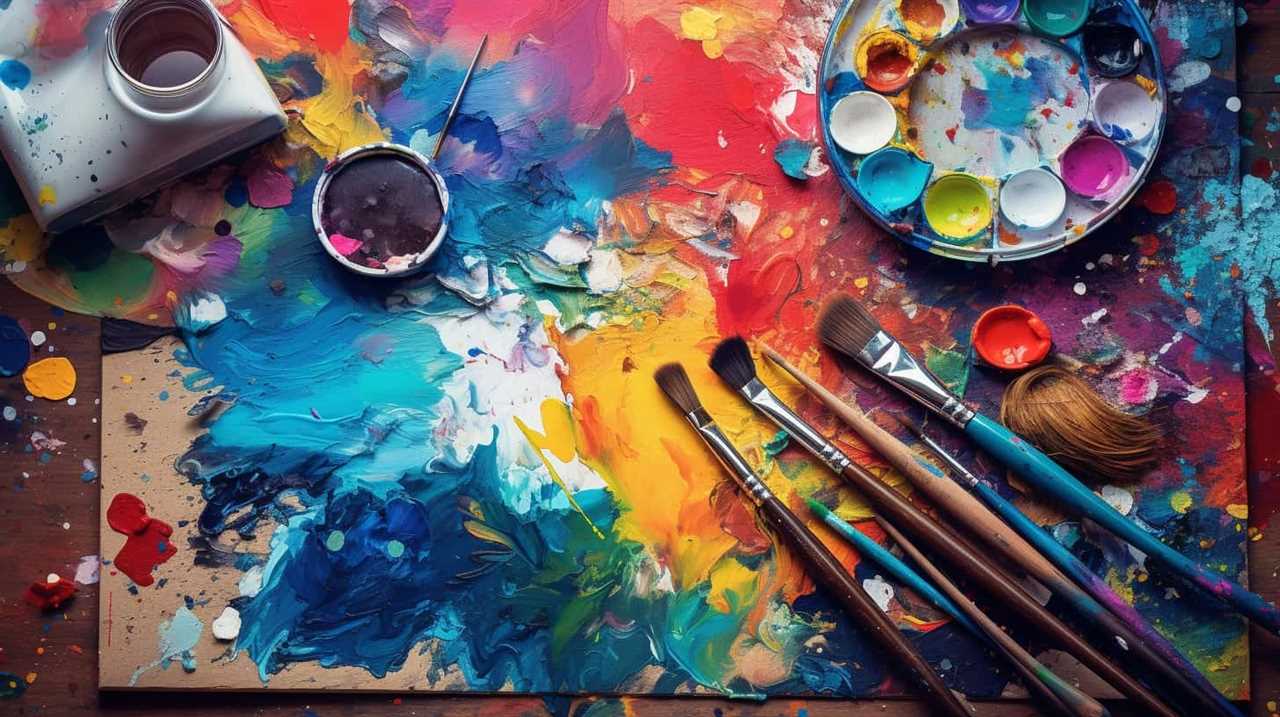
However, with these new opportunities come new challenges. The digital revolution has also brought about concerns regarding copyright, intellectual property, and the commodification of art. As artists navigate this evolving landscape, it’s crucial for them to find a balance between embracing digital technology and preserving the integrity and authenticity of their creative expression.
Redefining the Boundaries of Art Through Digital Innovations
Digital innovations have revolutionized the art world, expanding artistic possibilities in ways previously unimaginable. With the advent of digital tools and platforms, artists now have access to a wide range of mediums and techniques that were once limited to traditional art forms.
This democratization of art creation allows for greater inclusivity and diversity, as artists from all walks of life can now express themselves and share their work with a global audience. Furthermore, these digital innovations challenge the traditional norms of art, pushing the boundaries of creativity and inviting artists to explore new artistic landscapes.
Expanding Artistic Possibilities
We have witnessed an unprecedented expansion of artistic possibilities through digital innovations, reshaping the boundaries of art. The integration of digital mediums in art creation has opened up new avenues for artists to explore and experiment with their creativity. Here are five ways in which digital innovations have expanded artistic horizons:

- Augmented reality (AR) and virtual reality (VR) technologies have allowed artists to create immersive and interactive experiences for viewers.
- Digital painting and drawing tools have made it easier for artists to experiment with different styles and techniques.
- 3D printing has revolutionized the way sculptures are created, allowing artists to bring their visions to life in a tangible form.
- Digital photography has made it possible for artists to capture moments and manipulate images in ways that were previously unimaginable.
- Digital storytelling platforms have given artists the ability to tell their stories through multimedia formats, combining visuals, text, and sound.
As digital innovations continue to push the boundaries of art, the possibilities for artistic expression are endless. This expansion of artistic possibilities has paved the way for the democratization of art creation, allowing artists from all walks of life to express themselves and share their work with the world.
Democratizing Art Creation
Through digital innovations, artists have redefined the boundaries of art by democratizing art creation. The digital revolution has had a profound impact on art, opening up new avenues for artists to express themselves and reach a wider audience. One of the key ways in which digital innovations have democratized art creation is through the availability of online platforms and tools that enable artists to showcase their work and connect with others in the artistic community. This has not only made it easier for artists to share their creations, but it has also democratized art education by providing access to tutorials, resources, and communities that were previously inaccessible to many aspiring artists. Additionally, the digital revolution has disrupted the traditional art market by allowing artists to sell their work directly to buyers online, bypassing the need for galleries and middlemen. This has given artists greater control over their own careers and has opened up new opportunities for emerging artists to gain recognition and success. Overall, digital innovations have played a crucial role in democratizing art creation, empowering artists and reshaping the art world.
| Impact of Digital Innovations on Art | Democratizing Art Creation | Impact on Art Market |
|---|---|---|
| Online platforms and tools enable artists to showcase their work and connect with others in the artistic community | Provides access to tutorials, resources, and communities that were previously inaccessible to many aspiring artists | Disrupts the traditional art market by allowing artists to sell their work directly to buyers online, bypassing the need for galleries and middlemen |
| Artists can reach a wider audience and gain recognition for their work | Gives artists greater control over their own careers | Opens up new opportunities for emerging artists to gain recognition and success |
| Allows for collaboration and exchange of ideas among artists from different parts of the world | Redefines the boundaries of art by enabling artists to experiment with new mediums and techniques | Provides a platform for artists to showcase their work and gain exposure |
| Enables artists to experiment with new mediums and techniques | Facilitates the sharing of ideas and inspiration | Creates a more accessible and inclusive art market |
Challenging Traditional Artistic Norms
Redefining the boundaries of art, digital innovations have challenged traditional artistic norms by expanding artistic possibilities and pushing the limits of creativity.
In the digital age, artists are exploring unconventional methods and redefining aesthetics, breaking free from the constraints of traditional mediums and techniques.
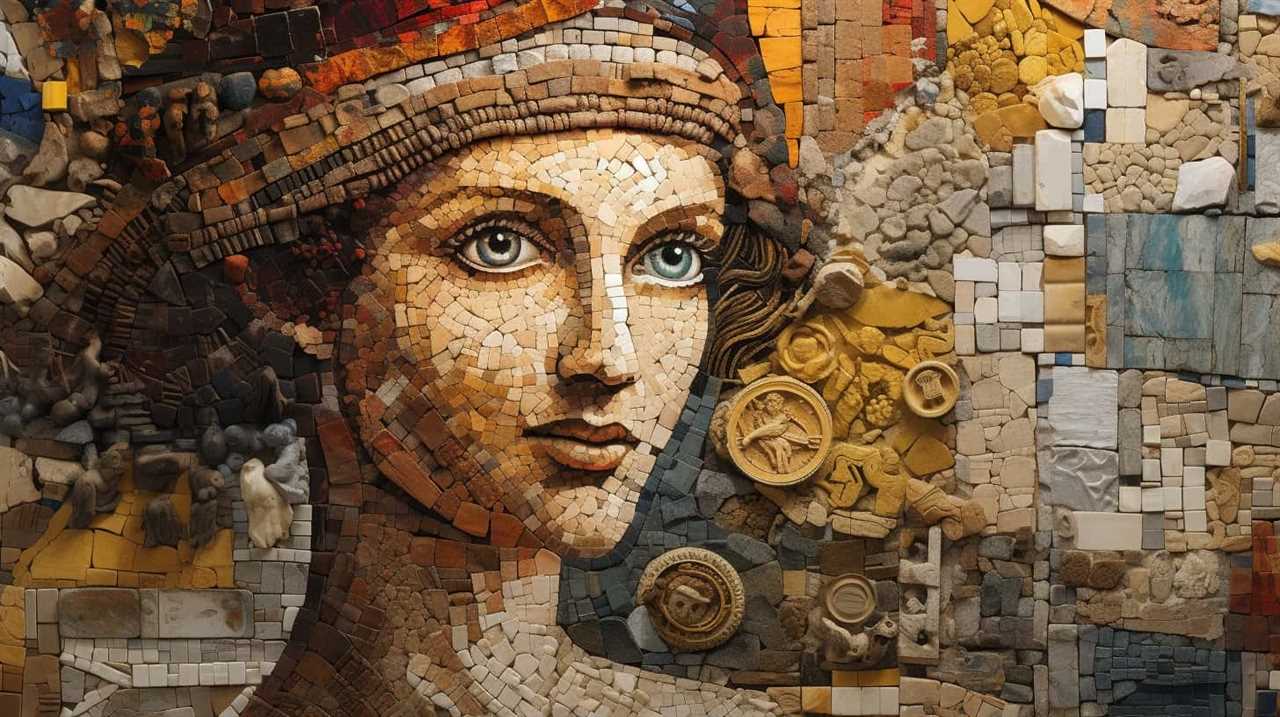
Here are some ways in which digital innovations are challenging traditional artistic norms:
- Blurring the line between art and technology, artists are using digital tools to create interactive and immersive experiences.
- Collaborative art projects are being facilitated through online platforms, allowing artists from different locations to work together and share their perspectives.
- Digital art has made it possible to create art that’s constantly evolving and changing, challenging the notion of a fixed, static artwork.
- The use of algorithms and artificial intelligence in art creation is pushing the boundaries of creativity, allowing for unexpected and unconventional results.
- Digital platforms have democratized the art world, providing artists with new opportunities to showcase their work and reach a global audience.
Through these digital innovations, artists are challenging traditional norms, pushing the boundaries of what’s considered art, and redefining the aesthetics of the artistic experience.
The Impact of Social Media on Artists’ Careers
The use of social media has significantly transformed the careers of artists, revolutionizing the way we connect with audiences and promote our work. Social media platforms such as Instagram, Twitter, and TikTok have become powerful tools for artists to build and enhance their personal brands. Through these platforms, artists can showcase their work, share their creative process, and engage directly with their audience. Social media allows artists to control their own narrative, presenting themselves in a way that aligns with their artistic vision and values.
Furthermore, social media has given rise to the role of influencers in promoting artists’ work. Influencers, who are individuals with a large following on social media, can play a crucial role in amplifying an artist’s reach and exposure. By collaborating with influencers, artists can tap into their established audience and gain access to new and diverse demographics. This not only helps artists gain recognition but also opens doors to potential collaborations, exhibitions, and sales opportunities.
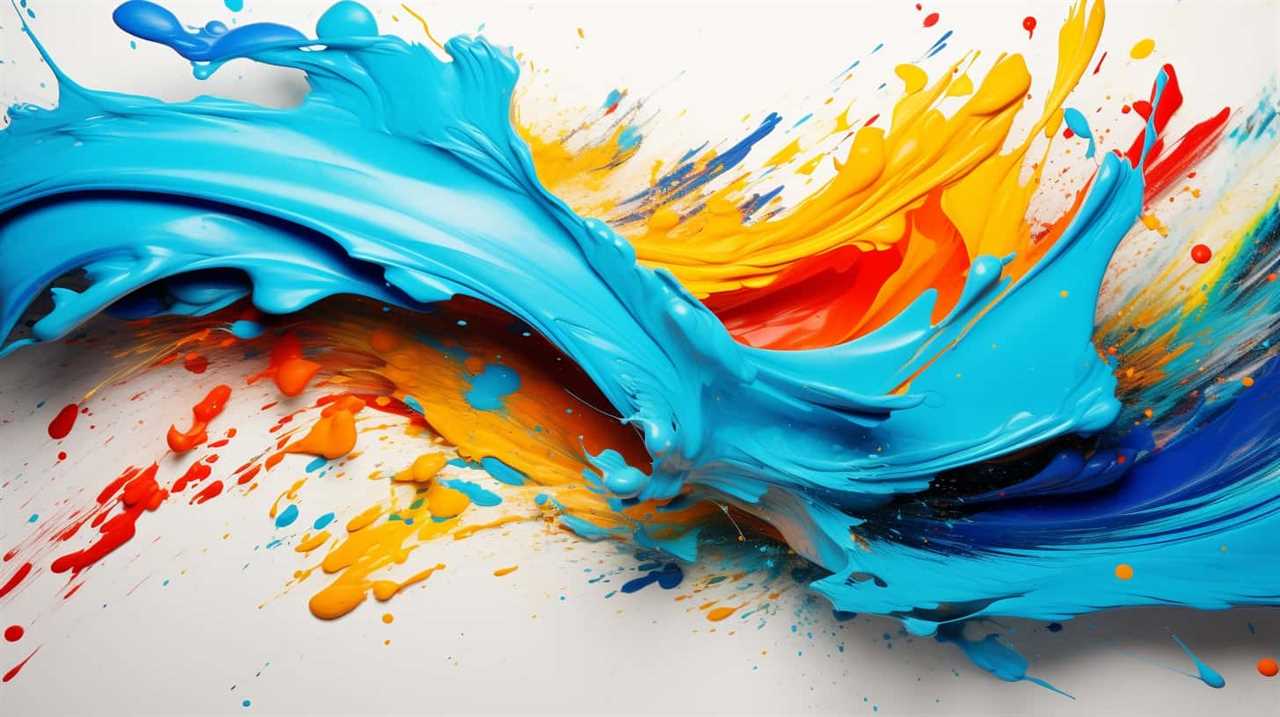
However, it’s important for artists to navigate social media with caution and authenticity. While social media can be a powerful tool, it can also be overwhelming and demanding. Artists need to strike a balance between promoting their work and maintaining a genuine connection with their audience. By being true to their artistic vision and using social media strategically, artists can leverage these platforms to elevate their careers and reach new heights.
Digital Tools and Techniques Transforming Artistic Processes
Social media’s impact on artists’ careers extends beyond promotion and audience engagement, as digital tools and techniques are revolutionizing the artistic process itself. Artists now have access to a wide range of digital tools and techniques that are transforming the way they create and present their work.
Here are some of the ways in which digital tools and techniques are transforming artistic processes:
- Digital Art Market: The rise of digital art platforms and marketplaces has opened up new opportunities for artists to showcase and sell their work online. Artists can now reach a global audience and connect with potential buyers from all over the world.
- Virtual Reality in Art: Virtual reality technology is being increasingly used by artists to create immersive and interactive experiences. Artists can now transport viewers into virtual worlds and allow them to engage with their art in ways that were previously unimaginable.
- Digital Drawing and Painting: Digital tools and software have made it easier for artists to create digital drawings and paintings. Artists can now experiment with different techniques, colors, and styles, and make changes to their artwork easily without the need for physical materials.
- Digital Sculpting: Digital sculpting software allows artists to create intricate and detailed sculptures digitally. This gives artists more freedom to explore different forms and shapes, and make changes to their sculptures without the limitations of physical materials.
- Digital Editing and Manipulation: Digital tools and software have made it easier for artists to edit and manipulate their artwork. Artists can now make precise adjustments to their artwork, add special effects, and experiment with different compositions.
As digital tools and techniques continue to evolve, the possibilities for artistic expression are becoming endless. The digital age is truly a catalyst for artistic collaboration and global reach, as we’ll explore in the next section.
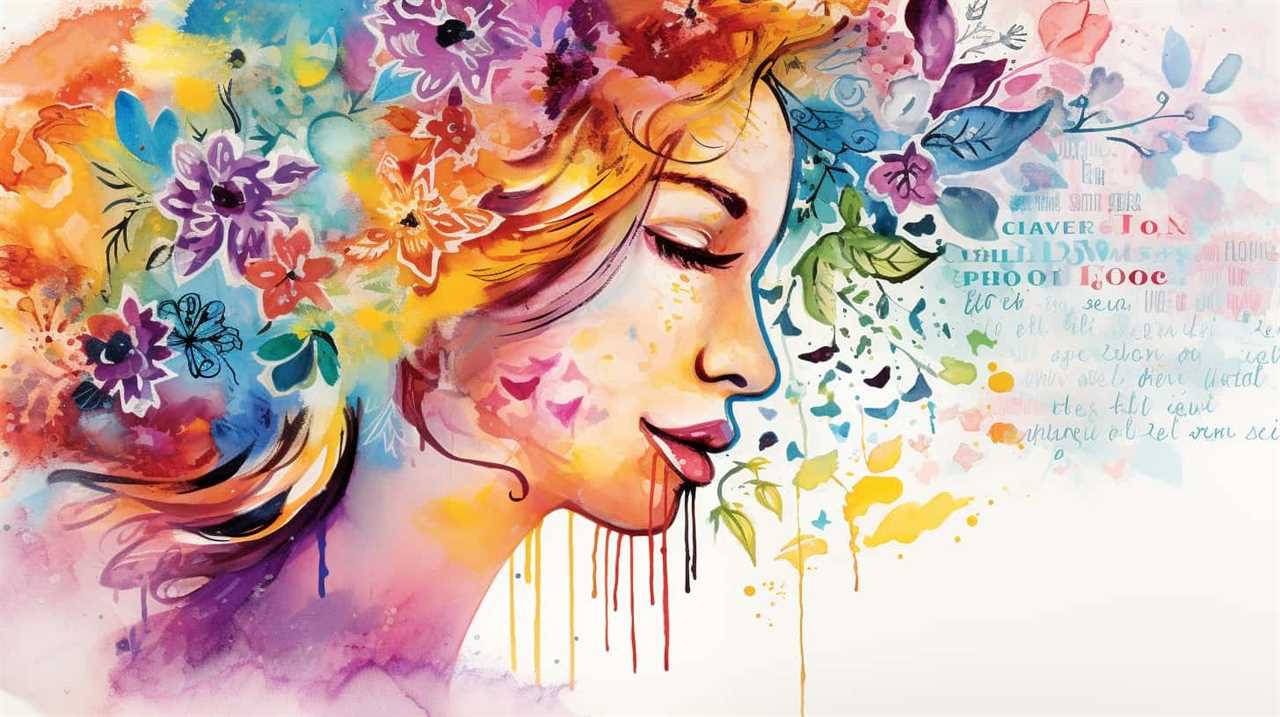
The Digital Age: A Catalyst for Artistic Collaboration and Global Reach
One significant impact of the digital age on artists is its role as a catalyst for artistic collaboration and global reach. Through the advent of collaborative platforms and global networking, artists now have the opportunity to connect, collaborate, and create with individuals from all around the world. These digital tools have revolutionized the way artists work together, breaking down geographical barriers and allowing for the exchange of ideas and techniques in real-time.
Collaborative platforms such as Google Docs, Dropbox, and Trello have made it easier than ever for artists to collaborate on projects. Artists can now work together simultaneously, sharing their work, making edits, and providing feedback in real-time. This level of collaboration enhances the creative process, allowing artists to push the boundaries of their work and create something truly unique.
In addition to collaborative platforms, global networking has also played a crucial role in expanding the reach of artists. Social media platforms like Instagram, Twitter, and Facebook allow artists to showcase their work to a global audience, attracting attention and recognition from people all over the world. Artists can now connect with collectors, galleries, and other artists from different countries, opening up new opportunities for exposure and collaboration.
Frequently Asked Questions
How Has the Digital Revolution Affected the Traditional Process of Creating Art?
The digital revolution has significantly impacted the traditional process of creating art. Technological advancements have revolutionized the way artists express themselves, allowing for new mediums, tools, and platforms that have a profound impact on creativity.
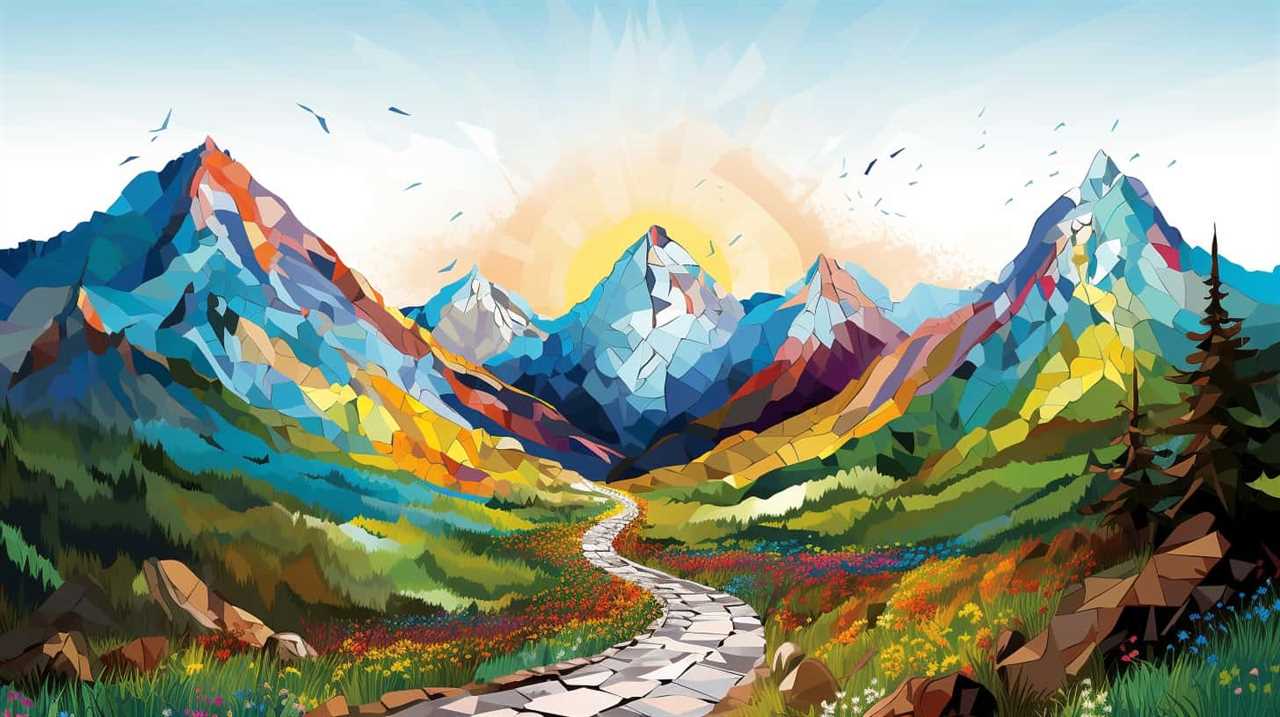
What Are Some Examples of New Artistic Mediums That Have Emerged as a Result of Technological Advancements?
Virtual reality experiences and interactive installations are examples of new artistic mediums that have emerged as a result of technological advancements. These mediums offer immersive and interactive ways to engage with art, pushing the boundaries of traditional artistic processes.
How Can Artists Overcome the Challenges of Copyright Infringement and Piracy in the Digital Era?
We can overcome copyright challenges and piracy in the digital era by implementing anti-piracy measures, such as watermarking and digital rights management. These measures protect our work and ensure that we can continue to create and share art freely.
Has the Digital Revolution Made It Easier or More Difficult for Artists to Make a Living From Their Work?
The digital revolution has both eased and complicated the economic challenges for artists. While it has opened up new avenues for distribution and exposure, it has also increased competition and raised concerns about copyright protection. Additionally, its impact on creativity is both liberating and challenging, as artists navigate new tools and platforms to express their art.
How Has Social Media Changed the Way Artists Promote and Share Their Artwork With the World?
Social media has transformed the way artists promote and share their artwork. Platforms like Instagram and Facebook have become virtual galleries, allowing artists to build a strong online presence and reach a global audience. The impact of social media on art promotion cannot be overstated. It has created vibrant online art communities, connecting artists with each other and with art enthusiasts. Social media has democratized art, giving artists the power to self-promote and showcase their work without relying solely on traditional gatekeepers. It has also revolutionized digital marketing for artists, providing them with a cost-effective and accessible way to market their creations. The digital revolution and the rise of social media have truly liberated artists, empowering them to share their art with the world.

How Does the Digital Revolution Impact the Creativity of Artists?
The digital revolution is reshaping the artistic landscape, as media art tech creativity blend seamlessly. Artists are exploring new avenues for expression, leveraging technology to push the boundaries of traditional art forms. Digital tools offer endless possibilities, allowing creators to experiment, innovate, and connect with global audiences in unprecedented ways.
Conclusion
In conclusion, the digital revolution has undeniably transformed the world of art, offering new creative possibilities, challenges, and opportunities for artists.
One fascinating statistic is that 81% of artists now use digital tools and techniques in their artistic processes, allowing them to explore new artistic expressions and redefine the boundaries of art.
The digital age hasn’t only revolutionized individual artistic practices but has also facilitated collaboration and global reach, connecting artists from all corners of the world.
Lauren’s talent in writing is matched by her passion for storytelling. Her love for books and deep understanding of culture and entertainment add a distinct flavor to her work. As our media and press contact, Lauren skillfully bridges the gap between afterQuotes and the broader media landscape, bringing our message to a wider audience.





